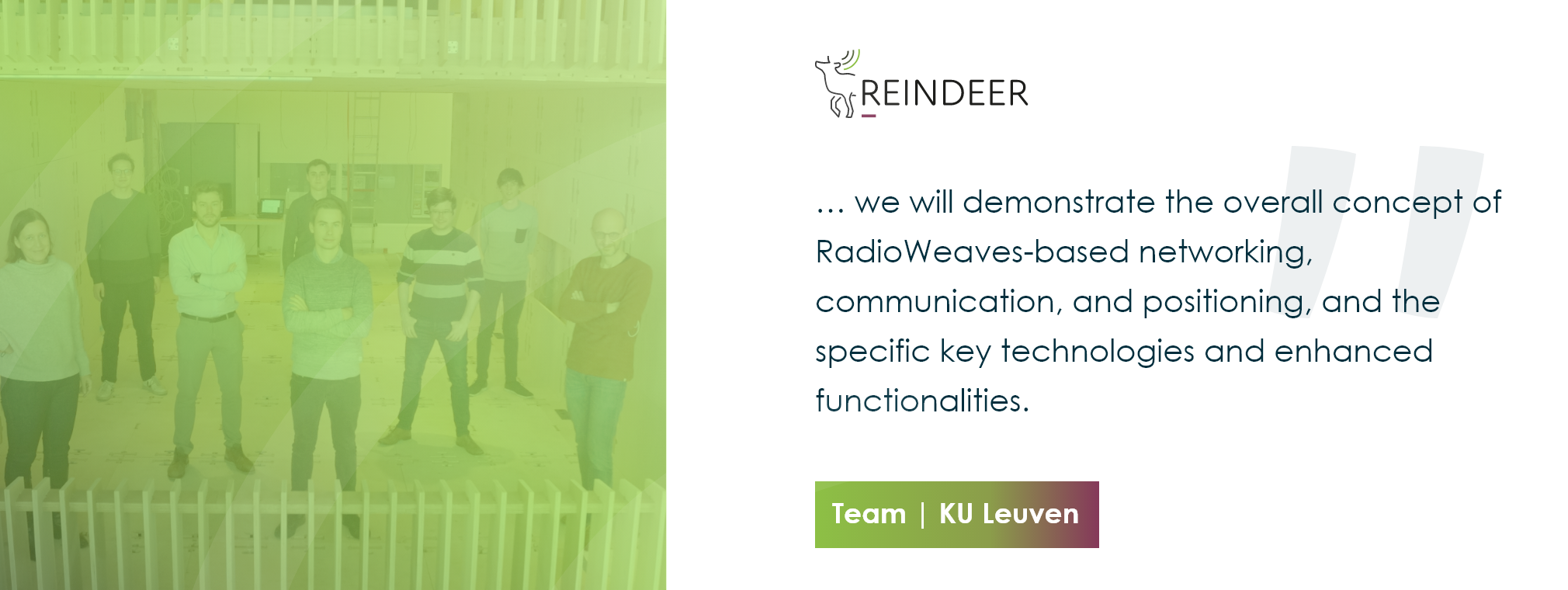Today in a talk with Liesbet Van der Perre and Gilles Callebaut from KU Leuven Team – Belgium – 5 questions about the team and the REINDEER H2020 project:
Introduce yourself and tell us a bit about your background.
Liesbet: I am a Professor at the WaveCore-DRAMCO group of the Electrical Engineering Department of KU Leuven and a guest Professor at Lund University. In my past research I have mostly focused on energy efficient wireless connectivity solutions.
Gilles: My name is Gilles Callebaut and I am a PhD student at the same group. In my PhD I focus on energy-saving solutions and proofs-of-concept for remote IoT devices. In this project, I will contribute to the initial access schemes and the development of the RadioWeaves testbed in Ghent.
What is your title and/or role in the project? What are your contributions to the project?
Liesbet: I was one of the initiators of the REINDEER project and it is my honor to serve as its overall technological lead.
Gilles: As WP5 lead, we will experimentally validate the main results of the other WPs. By means of our testbed, we will demonstrate the overall concept of RadioWeaves-based networking, communication, and positioning, and the specific key technologies and enhanced functionalities. As a strong enthusiast of open-source, all developments on the RadioWeaves testbed, called internally Techtile, are published on Github (www.github.com/techtile-by-dramco/) and on our website (dramco.be/techtile).
What can we expect REINDEER to bring for beyond 5G networks?
Liesbet: I expect a major contribution of the project will be that we will bridge the gap between the theoretical ideas and novel concept of cell-free distribute massive MIMO and Large Intelligent Surfaces and feasible deployments. This raises hard technological questions such as synchronization, and implementations based on distributed architectures. The consortium brings together experts that together can realize the necessary breakthroughs.
How do you think the project outcome could affect our daily life?
Gilles: In this project we will investigate how to build a RadioWeaves infrastructure and demonstrate the expected gains and newly supported applications. By integrating electronics in surfaces, the required radiated power could be drastically lowered. Moreover, new perceived zero-latency applications such as AR will be supported by this infrastructure.
What is your wish for the consortium in the coming years?
Liesbet: I wish we can really perform research together and find the missing pieces of the puzzle we envision. I have found the discussions with experts in the consortium to be very inspiring and motivating in the past. Prof. T. Marzetta, who advised us in the FP7 MAMMOET project once called the interactions ‘a great intellectual treat’. That is also how I experienced it, and I’m looking very much forward to the same open atmosphere in REINDEER.
